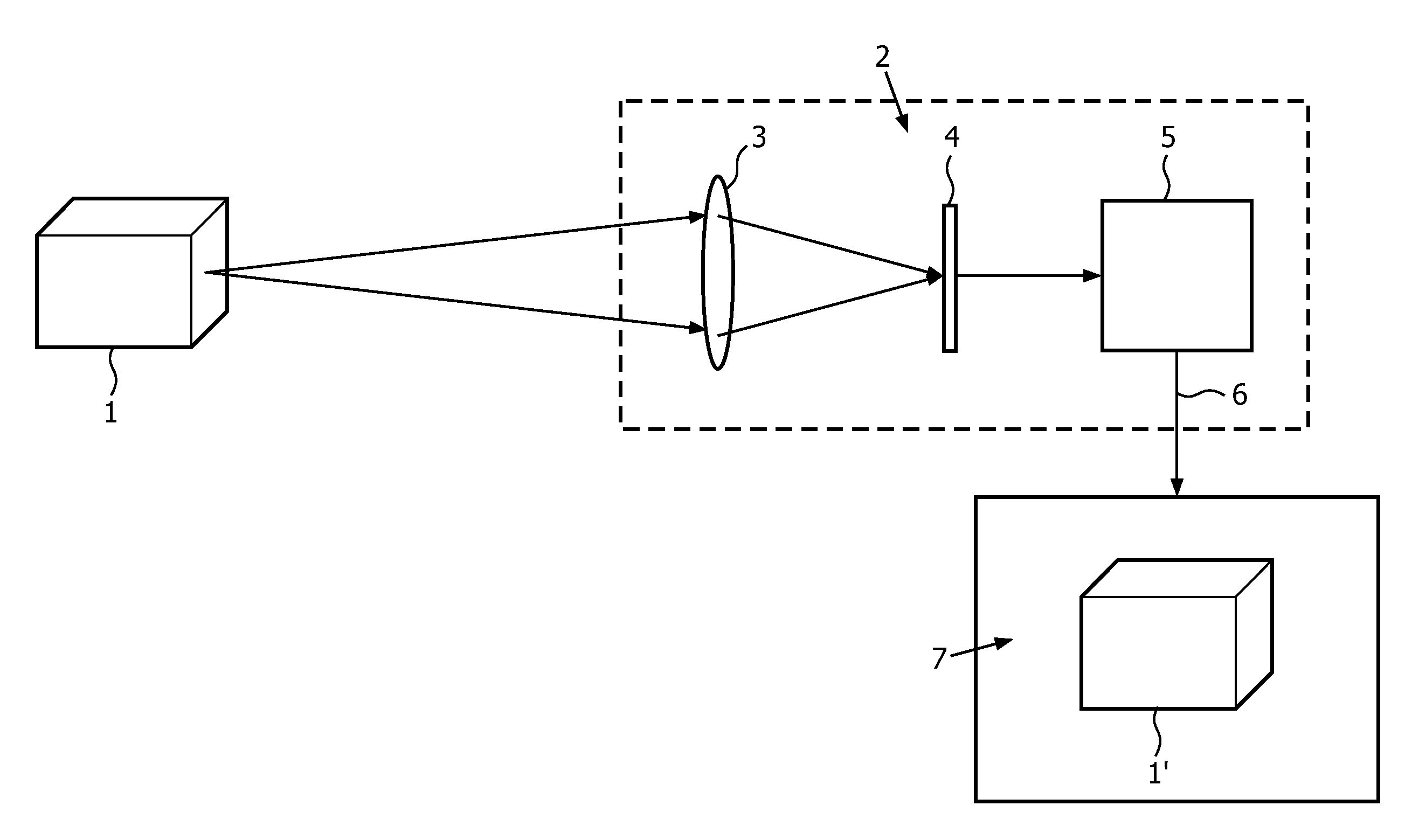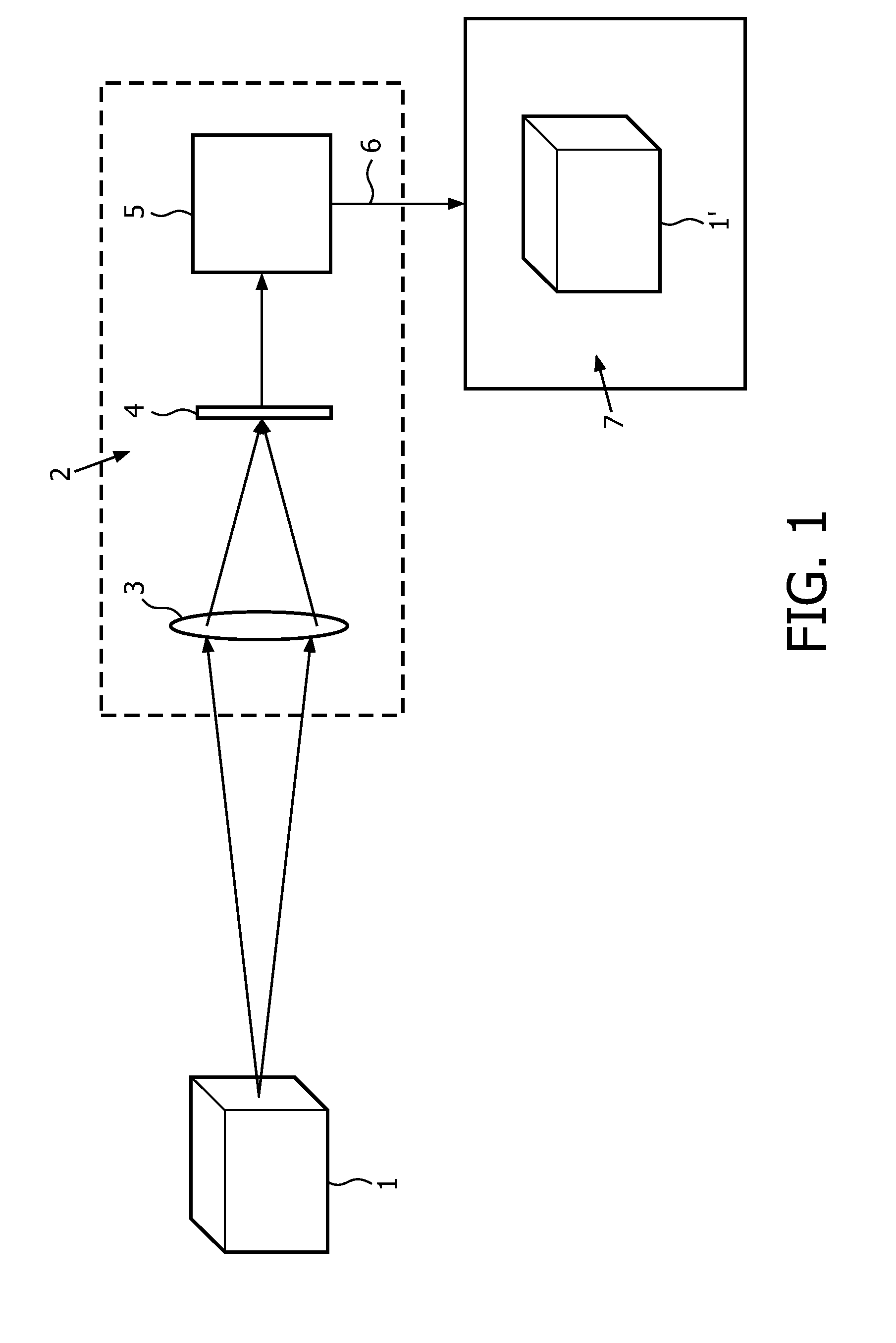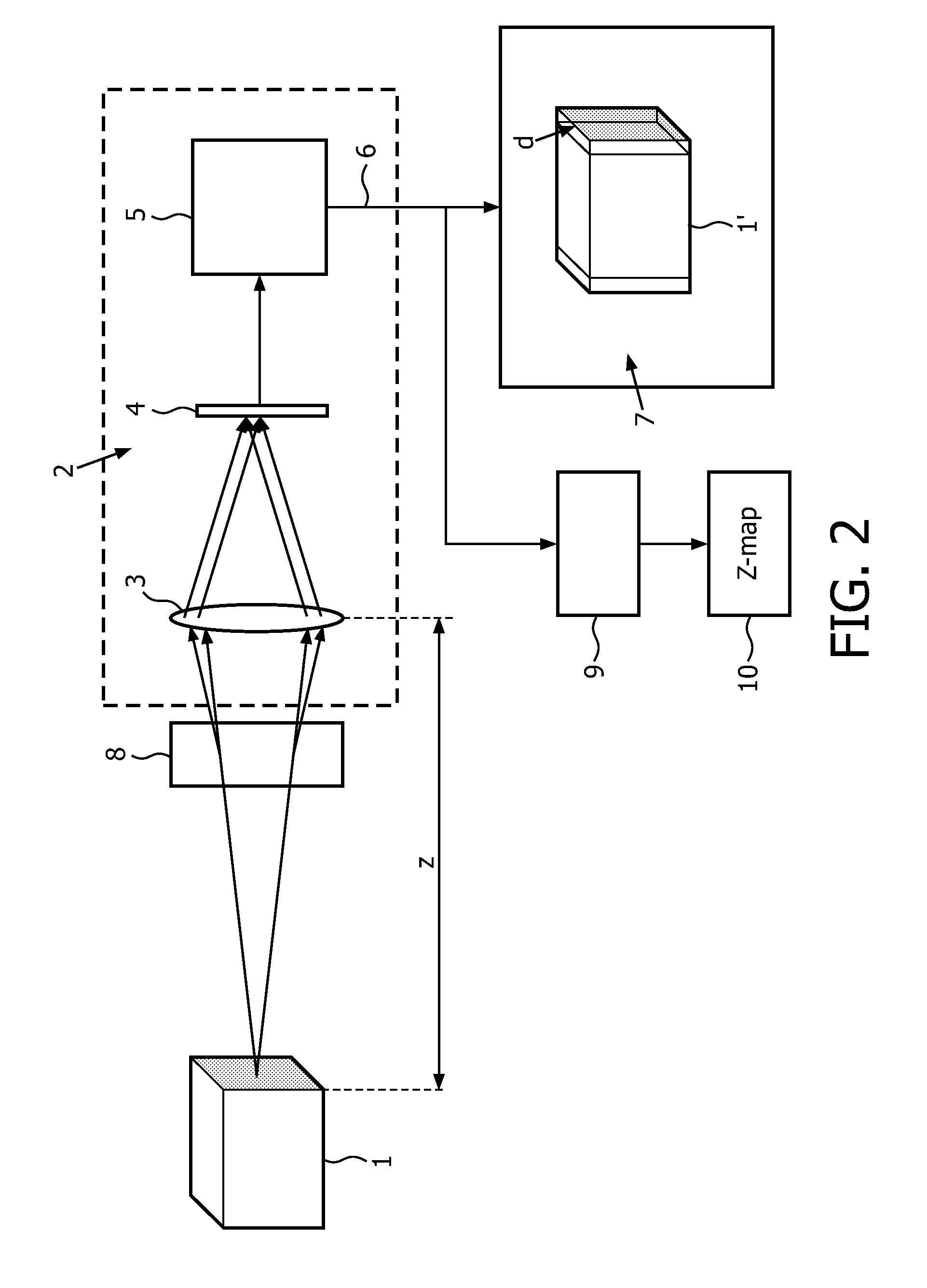Stereoscopic image capturing method, system and camera
a stereoscopic image and camera technology, applied in the field of system a camera for recording image data, can solve the problems of ultra precise alignment requirements between the two cameras, affecting the quality of video images, so as to avoid any problems with lens alignment
- Summary
- Abstract
- Description
- Claims
- Application Information
AI Technical Summary
Benefits of technology
Problems solved by technology
Method used
Image
Examples
Embodiment Construction
[0051]FIG. 1 schematically illustrates a system, method and camera to record images.
[0052]The object 1 is captured by lens 3 of camera 2. The image is focused on sensor 4, for instance a CCD. This device produces a signal which is converted into signal 6 by for instances an encoder 5. The encoder 5 could do some image enhancement or otherwise improve the image signal.
[0053]The signal can be sent, either in encoded form or directly to a display device having a display 7 on which an image 1′ is visible. The signal 6 can also be stored on some type of storage medium.
[0054]FIG. 2 schematically illustrates a system, method and camera to record image data in accordance with the invention.
[0055]In front of the lens, an optical device 8 is positioned. The optical device can be positioned at some distance from the camera or attached to the camera. The optical device creates two or more superimposed images on the sensor. On the display 7, one would see two or more constituting images, slightl...
PUM
 Login to View More
Login to View More Abstract
Description
Claims
Application Information
 Login to View More
Login to View More - R&D
- Intellectual Property
- Life Sciences
- Materials
- Tech Scout
- Unparalleled Data Quality
- Higher Quality Content
- 60% Fewer Hallucinations
Browse by: Latest US Patents, China's latest patents, Technical Efficacy Thesaurus, Application Domain, Technology Topic, Popular Technical Reports.
© 2025 PatSnap. All rights reserved.Legal|Privacy policy|Modern Slavery Act Transparency Statement|Sitemap|About US| Contact US: help@patsnap.com



